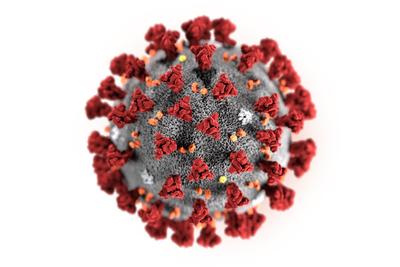Sponsored content from RESCUE Intellitech
By: Robert Avsec, Executive Fire Officer
When historians look back on the COVID-19 pandemic and how it was mismanaged in the U.S., one of the key failures at the federal level will be the lack of a communication strategy that’s familiar to anyone who’s has education, training, and experience as an emergency manager.

I remember very clearly in my first EM class hearing our instructor say, “Bad news doesn’t get better with age.” His point was that in an emergency or crisis your job is to communicate information, not try to put a positive spin on something that’s not positive. In a crisis people are scared, and the best way to counter their fears is with the facts that answer their questions:
- What do you know? (And diligently update that info in real time)
- What are you doing about it?
- When will things get better?
HAVE A COMMUNICATONS STRATEGY
To effectively communicate that information, leaders must have a communication strategy that looks something like this:
- One message that’s clear and concise and factual.
- Deliver that message over multiple channels (e.g., Twitter, Facebook Live, YouTube).
- Deliver that message repeatedly. One and done isn’t a communications strategy, otherwise it’s just “checking a box.”
- Reinforce the message through well-crafted policies and procedures
INFORMING AND EDUCATING FIREFIGHTERS ABOUT CANCER RISK AND PREVENTIVE MEASURES
Another communications failure during the U.S. government’s response to the COVID-19 pandemic has been its failure to give the public vetted sources of information where anyone could go to become informed and educated about the virus, how it was transmitted, what protective measures were effective, and why they were effective.

In the absence of a national communication strategy, the Internet—more specifically social media—stepped in to fill the information void. And unfortunately, too many Americans are not “savvy shoppers” when it comes to looking for, and finding, credible and reliable sources of information.
Much the same can be said about fire service leaders and firefighters concerning where they are getting their information about the cancer risk firefighters face from on-the-job exposures to chemicals, chemical compounds, and carcinogens.
INFORMATION ABOUT FIREFIGHTERS AND CANCER
There are a good number of organizations that have been working diligently to provide the information firefighters need to become informed and educated about the risks, what can be done to reduce the risk, and why these risk reduction measures work. Here’s a quick list of those organizations working for you:
The Fire Fighter Cancer Foundation was established in 2004 to provide international outreach, support, and resource assistance programs for firefighters and family members that are stricken by cancer. The Foundation is creating state of the art programs for cancer education, awareness, research, and prevention to ensure the quality of life and retirement of fire fighters around the world.
Since 2005, the nonprofit Firefighter Cancer Support Network (FCSN) has provided assistance and one-on-one mentoring to thousands of cancer-stricken firefighters and their families. FCSN also delivers extensive firefighter cancer awareness and prevention training nationwide.
The Firefighter Safety Through Advanced Research (FSTAR) program is dedicated to advancing firefighter safety. Beginning in 2013, FSTAR promotes the idea that research could improve all aspects of the fire service, including operations, health and wellness, and fire prevention.
One of my favorite resources from FSTAR is its free Healthcare Provider’s Guide to Firefighter Physicals. Available to download as a PDF file, you can bring to your personal physician (like I did) or go to the MyDoc Walkin Clinic which helps them understand the physiological demands of firefighting and the resulting health risks that research shows firefighters are most prone to. And it’s just as valuable for fire service retirees because cancer and other significant health problems related to the job (e.g., heart disease, lung disease, musculo-skeletal injuries) may not manifest themselves until after you’ve retired.
Written by a consortium of physicians, healthcare professionals, researchers, and fire service experts experienced in evaluating and treating firefighters, the guide is a tool for informing and educating primary care physicians regarding the evaluation, treatment, and ongoing medical surveillance of the unique health and wellness needs of firefighters.
The First Responder Center for Excellence for Reducing Occupational Illness, Injuries and Deaths, created in 2016, is an affiliate organization of the National Fallen Firefighters Foundation (NFFF). The FRCE’s mission is to promote quality educational awareness and research to reduce physical and psychological health and wellness issues for first responders. The FRCE is committed to promoting quality educational awareness and research in five main programmatic areas: cancer prevention and awareness; behavioral health; cardiac; health and wellness; and firefighter physical [medical surveillance] initiatives.
THE SOLO RESCUE MESSAGE
The folks at RESCUE Intellitech, developers of the Solo Rescue SCBA Washer, understand the need for good communications as they continue to provide fire departments with the only self-contained cleaning solution for removing chemicals, chemical compounds, and carcinogens from SCBA following interior firefighting operations. And here’s that message:
- Today’s SCBA for firefighting is a marvel of technology with the goal of protecting firefighters from the hazards of interior structural firefighting.
- That high level of technology requires a cleaning solution that’s equally high-tech, that cleans every part of the SCBA while protecting your fire department’s investment in its SCBA
- The Solo Rescue SCBA Decon Washer is “Transformer-level” SCBA cleaning technology that provides a consistent level of cleaning—from the first SCBA cleaned through the last SCBA cleaned—that’s unobtainable with the “Caveman-level” of cleaning using soap and water and a brush.
 Fire & EMS Leader Pro The job of old firefighters is to teach young firefighters how to become old firefighters!
Fire & EMS Leader Pro The job of old firefighters is to teach young firefighters how to become old firefighters!